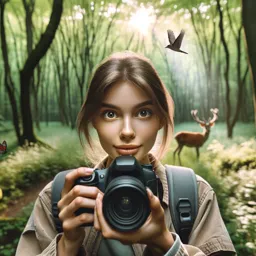Introduction
Wildlife photography is a breathtaking adventure into the natural world, capturing untamed animals in their authentic environment. It’s more than just a technical discipline—it’s a celebration of patience, observation, and respect for nature. Whether you’re a beginner or an experienced photographer seeking to expand your skills, wildlife photography offers endless opportunities to hone your craft and connect with the animal kingdom.
Essential Gear for Wildlife Photography
- Camera: DSLR or mirrorless cameras with fast autofocus and high frame rates are ideal.
- Lens: A telephoto lens (300mm or longer) is crucial for capturing distant subjects without disturbing them.
- Tripod/Monopod: Stabilization tools help prevent motion blur, especially with heavy lenses.
- Extra Batteries and Memory Cards: Wildlife action can be unpredictable—be prepared for extended shoots.
- Weather Protection: Rain covers and protective cases keep your gear safe in unpredictable conditions.
Tips for Successful Wildlife Photography
- Research Your Subjects: Understanding animal behavior helps anticipate movements and capture more compelling images.
- Be Patient and Observant: Great shots often require long waits. Embrace the process and stay alert.
- Respect Wildlife and Habitat: Avoid disturbing animals or altering their environment to get a shot.
- Shoot at Golden Hours: Early mornings and late afternoons provide soft, beautiful lighting.
- Use Continuous Shooting Mode: This mode increases your chances of catching fleeting moments.
- Practice Stealth: Move quietly, wear neutral colors, and use natural cover to avoid startling wildlife.
Ethical Considerations
Responsible wildlife photography prioritizes the wellbeing of animals and their habitats. Always photograph from a distance, follow local regulations, and never use flash or bait to manipulate animal behavior. Your presence should leave minimal impact on the natural world.
Post-Processing and Sharing Your Work
Editing software can enhance your images by adjusting exposure, contrast, and cropping for composition. Share your work with online communities or submit to nature magazines and competitions—your photos can inspire others to appreciate and protect wildlife.
Conclusion
Wildlife photography is a fulfilling blend of art and adventure. With thoughtful preparation and respect for wildlife, you’ll capture powerful images that tell the stories of nature’s inhabitants. Grab your camera, head outdoors, and let the wilderness unfold through your lens!
































